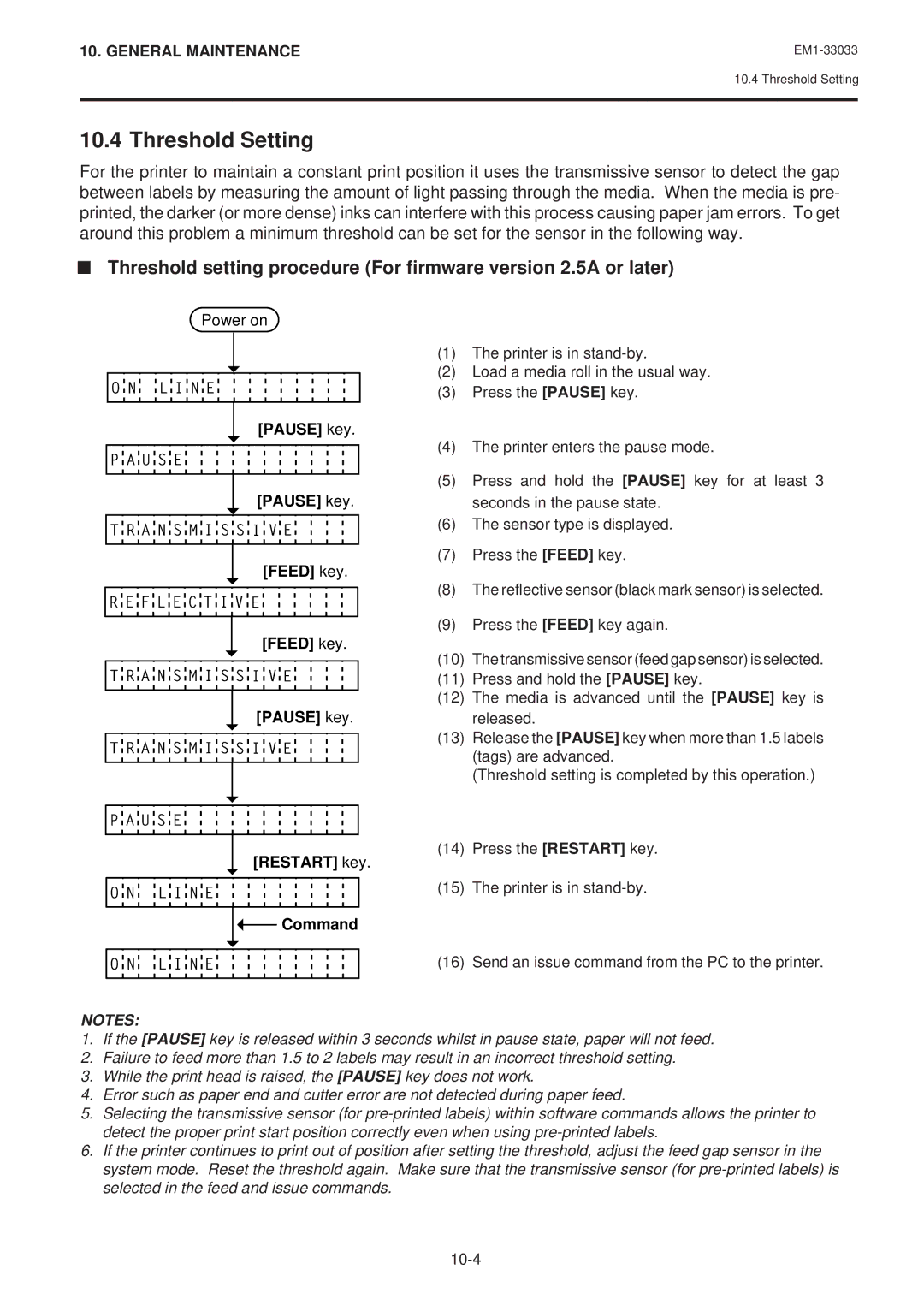EM1-33033, EM1-33033E specifications
The Toshiba EM1-33033E and EM1-33033 are advanced lithium-ion battery packs designed for various applications, including electric vehicles and renewable energy storage. These models highlight Toshiba's commitment to innovation and performance in energy storage technology.One of the standout features of the EM1-33033E and EM1-33033 batteries is their robust energy density. With a capacity optimized for long-lasting performance, these batteries can deliver enhanced power output, making them ideal for high-demand applications. This capability enables electric vehicles equipped with these battery packs to achieve higher ranges on a single charge, improving overall efficiency.
Both models are constructed using advanced lithium-ion technology, which helps in maintaining excellent thermal stability and safety. The lithium chemistry employed in these batteries reduces the risk of overheating and ensures more reliable operation under varying environmental conditions. Additionally, the design incorporates a high-quality thermal management system that maintains optimal battery temperatures during charge and discharge cycles.
Another critical characteristic of the Toshiba EM1-33033E and EM1-33033 is their fast charging capability. These battery packs can be charged quickly, reducing downtime and allowing for more flexible use in applications such as fleet management. Users benefit from shorter charging times, which is particularly advantageous in commercial settings where vehicle utilization rates are crucial.
The batteries also support a long lifecycle, thanks to Toshiba's proprietary manufacturing processes. The robust design ensures a high number of charge and discharge cycles, which translates into lower overall replacement costs and increased sustainability. Both models are designed with recyclability in mind, contributing positively to environmental impact considerations.
Moreover, Toshiba has integrated advanced monitoring systems within these battery packs. These systems provide real-time data on battery health, charge status, and performance metrics, allowing users to make informed decisions and optimize usage patterns.
In summary, the Toshiba EM1-33033E and EM1-33033 lithium-ion battery packs stand out due to their high energy density, fast charging capabilities, exceptional thermal stability, and long lifecycle. These features make them suitable for various energy storage applications, illustrating Toshiba's dedication to delivering reliable and efficient energy solutions for the future.

